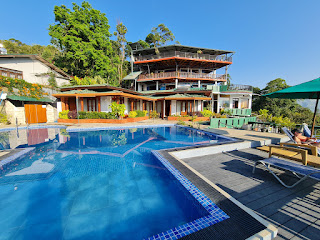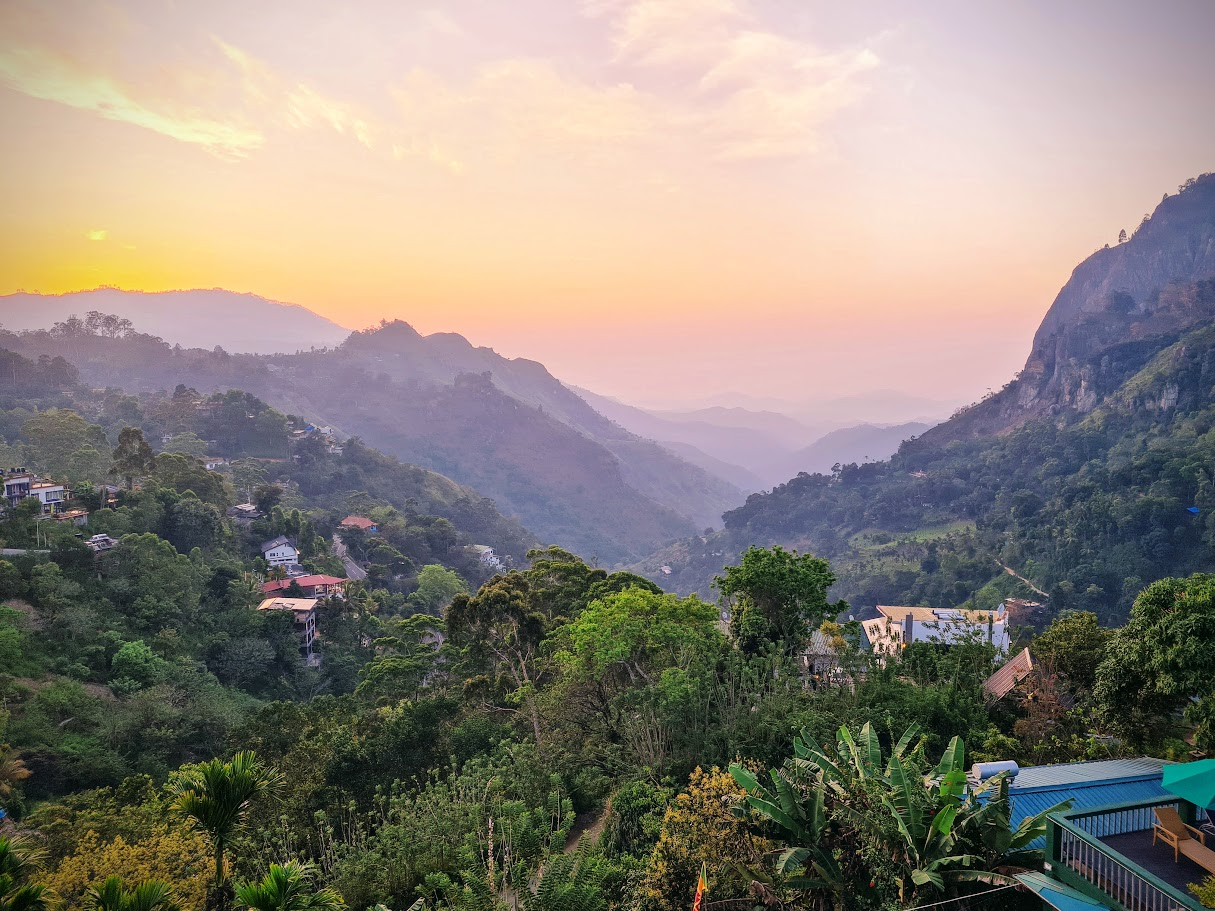I was born in Sri Lanka and did not leave the island till I turned 26. I have lived in Jaffna for most of my life, but I have also lived in Peradeniya near Kandy for six years, and I lived in Colombo for about two years. I have heard of Badulla, a city where one of my aunts taught; Gampola, another city where one of my neighbors taught; Bandara Wela and Hatton, where two of my classmates in Jaffna came from. Other than these cities, I have heard of Batticaloa, Trincomalee, Kataragama, and Galle, which are other major cities in Sri Lanka. I have never heard of Ella, a town between Badulla and Bandara Wela, now the poster child of Sri Lanka, attracting hoards of tourists in recent years. I first learned of Ella on a YouTube clip in which the Ella train station was promoted as a Green Station. The Station Master and the Staff spent two hours a day when trains were not passing through, mending its gardens and keeping the station clean. I travel through Sri Lanka often, and I added it to my bucket list and went there recently.
The best way to travel to Ella from Colombo is by train, which will take about seven hours, or from Kandy, which will take about four hours. Tickets are sold out months ahead, so anyone who wants to travel to Ella by train must plan and book tickets well ahead. The next best thing to do is travel from Nanu Oya to Badulla via Nuwara Eliya and Ella. The scenes are spectacular. Unfortunately, I could not make any of these trips. Instead, I had to take a bus ride from Colombo to Ella, which took four hours, sans most of the scenic beauty. I had to settle for the views between Mattala and Ella, which were beautiful as well. I intentionally took a daytime bus so I would not miss the views. The bus reached Ella around 2 pm.
Ella's business district is the main road (A23), about 1 km long. Cafes, bars, bakeries, boutiques, creameries, and restaurants are on both sides of the road, and almost everyone on the street is a tourist. Finding a restaurant that served Sri Lankan rice and curry was hard, but they were there. The cafe I had lunch was built on the side of a rock, on man made platform. Getting up was an excercise itself, but fun. I had lunch and decided to walk to the train station I saw on YouTube.
There were tourists and guides taking photos and waiting for a train to arrive. It turned out that a train from Badulla was about to come, which would go over the Nine Arch Bridge, the poster child, which gets rave reviews. The Nine Arch Bridge, between Ella and Demodera, is 2.5 km from Ella. Some wanted to see the train crossing the bridge, so they walked along the tracks towards the bridge, aiming to arrive before the train crossed. A one-way ticket from Ella to Demodera is 50LKR (15 US cents). I got one and waited with others to board the train.
As the train arrived, there was a bit of excitement among those who wanted to board the train. But, they have to give way to those who were deboarding. The train emptied itself at Ella. I found a seat in the ordinary class (it used to be third class as I knew it), along the side from which I could have a good view of the train as it bends its way over the Nine-Arch Bridge. Next to me was a Ukrainian couple, two of their children, and their guide. I tried to have a small conversation, but their English was poorer than my Ukrainian, so the conversation was limited. They offered me a piece of milk toffee, a Sri Lankan sweet, and I courteously accepted.
The train departed Ella and crawled its way to Demodera. A six km journey took 15 minutes. No one was in a hurry. Youngsters leaned outwards from the train, hanging their bodies in the whizzing air. I had done this before; I was much younger then. I took plenty of photos and videos, anything still and everything that moved.
Despite a long day of travel and a comfortable room, I could not sleep and was on the balcony by 5 am, waiting for the sun to come up. I was glad that I did so, to witness every shade of every color change minute by minute. The best was seeing the sun rising on top of a mountain. As a kid, when we drew sunrise, the sun always came up from the valley, not on top of a hill. Not sure why we drew so. I was not alone; there was another middle-aged European couple, and a squirrel gave me company.
Sunrise at Ella - Views from Ravana Range
I then had breakfast – hopper with honey for the first time in my life and then went to bed.
Hopper with Honey
The checkout time at the hotel was noon, so I called a three-wheeler to get back to the city via a visit to the Nine Arch Bridge. I wanted to stay on the ground and watch the train pass this time. The luck was with me, and as I reached the bridge, I saw hundreds of tourists eagerly waiting for a train to enter through a tunnel. A young couple was on top of the bridge, embracing each other - very romantic. As the train exited the tunnel, the crowd clapped and cheered, and to my surprise, this train stopped on top of the bridge. Some passengers got out of the train, and some onlookers got into the train. It was surreal.
Once the train started to move, the tourists left, and I went to the town to catch the bus back to Colombo. I kept wondering what has changed since I left Sri Lanka in 1980, which has made Ella a popular tourist destination. The mountains, the bridge, and the trains were all there when I left, right? I reckon it is the Tourism Industry, which was not well developed in the 1980s. The tourism industry has become one of the country's leading sources of foreign exchange, largely due to the efforts of industry leaders who have developed Ella into a prominent destination.

















